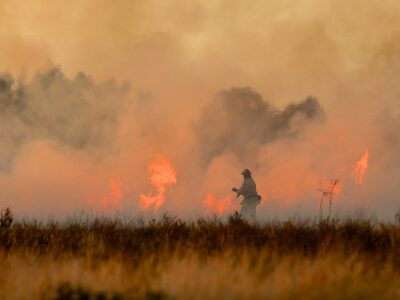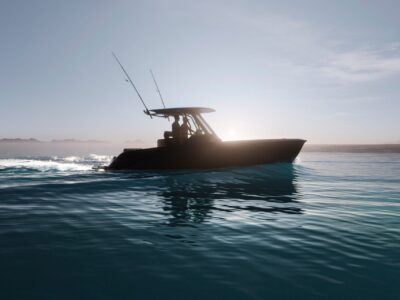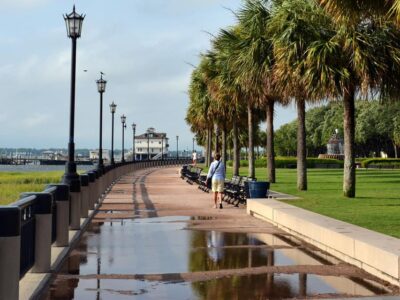The history and locations of the United States Territories are varied, but they have one thing in common — water. Whether incorporated, unincorporated, inhabited, or uninhabited, the sea is a part of the very fabric of the lands, surrounding them on all sides.
The five major territories — American Samoa, Guam, Northern Mariana Islands, U.S. Virgin Islands, and Puerto Rico — are inhabited islands with locally elected legislatures and executives. Three are in the South Pacific, and two are in the Caribbean Sea.
The U.S. Minor Outlying Islands consist of eight insular areas in the Pacific Ocean — Baker Island, Howland Island, Jarvis Island, Johnston Atoll, Kingman Reef, Midway Atoll, Palmyra Atoll, and Wake Island — and one in the Caribbean Sea — Navassa Island.
The label may be misleading about these permanently inhabited areas because while some are indeed small islands, others are actually reefs or atolls. An atoll is a ring-shaped coral reef, island, or series of islets surrounding a lagoon or shallow body of water.
These areas, like the Midway Atoll, have been the locations of military battles. Others, like the U.S. Virgin Islands, are known as beautiful vacation spots that people worldwide visit to soak up the sun, watersports, food, and culture.
The territories’ important stories of heroism and unique fauna and flora are preserved in their National Monuments. Read on to learn more!
American Samoa
Rose Atoll Marine National Monument: According to the National Oceanic and Atmospheric Administration (NOAA), this site — about 130 nautical miles east-southeast of Pago Pago Harbor in American Samoa — is one of the most pristine atolls worldwide. Rose Atoll and its dynamic reef ecosystem is the easternmost Samoan island and the southernmost point of the U.S. Established on Jan. 6, 2009, by a presidential proclamation, the monument area consists of more than 13,000 square miles, and the outer boundary is about 50 nautical miles from the Rose Atoll’s mean low water line. Since 2014, it has been part of the National Marine Sanctuary of American Samoa and encompasses the Rose Atoll National Wildlife Refuge.
Photo Courtesy NOAA Fisheries
Guam and Northern Mariana Islands
American Memorial Park: This park honors the American and Marianas people who died during the Marianas Campaign of World War II. Memorials stand in tribute to the sacrifice of the U.S. Servicemen and Chamorro and Carolinian civilians killed in the battles between the U.S. and Japan that took place on Saipan, Tinian, and the Philippine Sea in 1944. Dedicated on June 15, 1994, during the 50th anniversary of the Invasion of Saipan, more than 5,000 names are inscribed on the memorial. The park’s Court of Honor and Flag Circle flies the U.S. flag 24 hours a day, surrounded by the U.S. Army, Marine Corps, Navy, and Coast Guard flags.
Photo Courtesy NPS
Mariana Trench Marine National Monument: Located in the Mariana Archipelago east of the Philippines, the monument protects more than 95,000 square miles of submerged lands and waters in Guam and the Northern Mariana Islands. It is the deepest place on the planet — deeper than Mount Everest’s height above sea level! Mariana Trench contains the Volcanic Unit — an arc of undersea mud volcanoes and thermal vents — supporting unusual life forms in some of the harshest conditions. Established in January 2009, its remote location is inaccessible for on-site visits, educational or interpretive. However, the monument’s designation provides international recognition that the islands are, as NOAA says, “a refuge for seabirds, sea turtles, unique coral reefs, and a great diversity of seamount and hydrothermal vent life worth preservation.”
Photo Courtesy Hirez / NOAA
U.S. Minor Outlying Islands
Pacific Remote Islands Marine National Monument: This monument — encompassing more than 495,000 square miles of open ocean, coral reef, and island habitats — is almost five times the combined size of all the U.S. National Parks. It contains seven U.S. wildlife refuges: Howland, Baker, and Jarvis Islands; Johnston, Wake, and Palmyra Atoll; and Kingman Reef. It was established on Jan. 6, 2009, by President George W. Bush, but President Barack Obama expanded it to its current size on Sept. 25, 2014. According to the U.S. Fish and Wildlife Service (USFWS), the site is “one of the last frontiers of scientific discovery in the world and is a safe haven for Central Pacific biodiversity.” The monument sustains a diverse array of species, including corals, fish, marine mammals, birds, insects, and vegetation nowhere else in the world.
Photo Courtesy NOAA Fisheries
The World War II Midway Monument: Located on Midway Atoll, which is itself designated the Battle of Midway National Memorial, the spot marks the location of the pivotal Battle of Midway on the northwestern portion of the Hawaiian island chain. A granite “memory stone” pays tribute to America’s armed forces, with a path of native vegetation growing over and between the pavers. The Midway Monument, erected in August 2015, was the American Battle Monument Commission’s 27th monument, memorial, or marker.
Photo Courtesy American Battles Monument Commission
U.S. Virgin Islands
Buck Island Reef Monument: In 1961, this site was established by presidential proclamation and expanded in 2001 to protect “one of the finest marine gardens in the Caribbean Sea.” However, the Virgin Islands government took control of the island in 1936 and marked it and its coral reefs as a protected territorial park in 1948. The 176-acre landmass and surrounding coral reef ecosystem support various native wildlife and plants, including several endangered and threatened species, like hawksbill turtles and brown pelicans. The small, uninhabited island is located 1.5 miles north of the island of St. Croix.
The Elkhorn coral barrier reef, which surrounds two-thirds of the island, has breathtaking coral formations and deep grottoes, with abundant fish, sea fans, and gorgonians.
Photo Courtesy Buck Island Reef National Monument
Virgin Islands Coral Reef National Monument: Another National Monument is found in the Virgin Islands — this time, encompassing over half the island of St. John and almost all of Hassel Island. Coral Reef preserves stories of the prehistoric past and more than 100 historic sites, allowing visitors to see one of the most undisturbed Caribbean landscapes. Established by presidential proclamation in 2001, this site protects 12,708 acres of submerged marine habitat adjacent to Virgin Islands National Park and surrounding tropical forests. These waters, supporting a diverse and complex system of coral reefs and other ecosystems, house shoreline mangrove forests and seagrass beds.
Photo Courtesy NPS
Atlantic Ocean (Bonus)
Northeast Canyons and Seamounts Marine National Monument: This site is not in a U.S. Territory but is vital for marine conservation. The monument calls the coast off Southern New England home, a sizeable biodiverse open ocean area larger than Yellowstone National Park. It spans approximately more than 3.1 million acres, with magnificent geological formations shaping the underwater landscape and supporting abundant marine life. Established by presidential proclamation in 2016, it protects four underwater seamounts — Bear, Mytilus, Physalia, and Retriever — and three submarine canyons — Oceanographer, Lydonia, and Gilbert. According to USFWS, the spot is a living laboratory to conserve its unique ocean habitats while “uncovering a greater understanding of our ocean’s complex ecosystems.”
Photo Courtesy NOAA Fisheries





